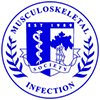Sensitivity of Detecting MSSA Colonization Using Groin and Gluteal Cleft Swabs
Authors: Chen AF, Farber NJ, Zammerilla LL, Nowicki AL, Rao N, Kang JD, Lee JY, Donaldson WF. University of Pittsburgh, Pittsburgh, PA
Title: Increased Sensitivity of Detecting MSSA Colonization Using Groin and Gluteal Cleft Swabs
Background: The gold standard of detecting S.aureus colonization is through nares cultures, but general surgery studies have demonstrated increased detection of S.aureus when other body parts are cultured. Most elective spine cases are conducted in the lumbar spine, which is in close proximity to the groin and gluteal cleft. No study has ever evaluated the colonization of S.aureus in different swab locations in elective spine patients.
Hypothesis/Purpose: Does the addition of groin and gluteal cleft swabs increase the sensitivity of detecting S.aureus colonization?
Methods: A prospective randomized study was conducted on 101 elective spine patients (12 primary cervical, 63 primary lumbar, 5 revision cervical, 21 revision lumbar). Patients were screened for nasal, groin and gluteal cleft S.aureus colonization 2-6 weeks prior to surgery. Those who were positive for S.aureus underwent decolonization using intranasal mupirocin and chlorhexidine body wash daily 5 days prior to surgery. Patients were then reswabbed on the day of surgery in the same locations to determine if the decolonization protocol was effective. The data was aggregated for preoperative and day of surgery results (n = 190) to determine the sensitivity of the swab locations.
Results: For elective spine patients, 26 patients were MSSA colonized and 5 patients were MRSA colonized. The sensitivity of nares swab detecting MSSA was 96%, while the sensitivity of detecting MSSA in the groin was 19.2% and the gluteal cleft was 8.3%. The sensitivity for MSSA detection increased to 100% when nares swabs were combined groin swabs, while it was only 96% for nares and gluteal cleft swabs. For MRSA, the sensitivity of nares swabs alone was 60%, groin swabs alone was 40%, gluteal cleft swabs alone was 20%, nares and groin swabs was 80%, nares and gluteal cleft swabs was 80%, and nares, groin, and gluteal cleft swabs combined was 100%.
Discussion: The addition of groin and gluteal cleft swabs increased the sensitivity of detecting MSSA/MRSA colonization compared to nares swabs alone, but the number of patients is too low to conclude if groin or gluteal cleft swabs are better for detecting MRSA/MSSA. Ongoing studies are being conducted to further elucidate the sensitivity and specificity of detecting S.aureus with multiple swab sites.
Conclusion: The addition of groin and gluteal cleft swabs increase the sensitivity of detecting MSSA and MRSA colonization in elective spine patients.

